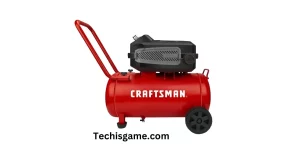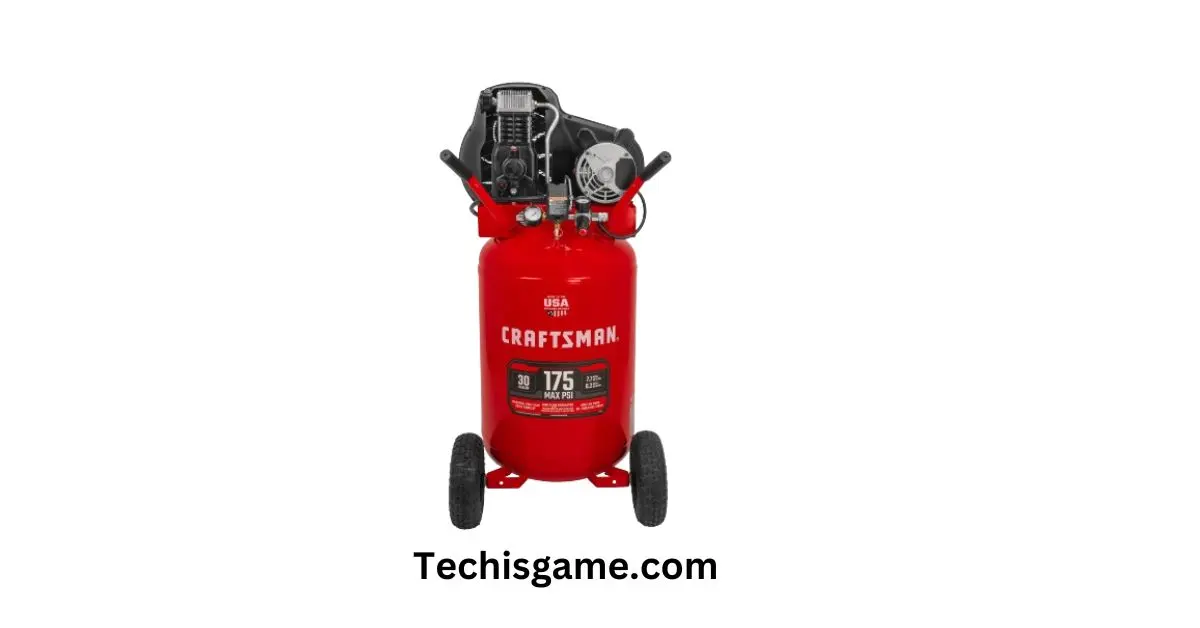Learning how to use a Craftsman air compressor is crucial for getting the most out of it in various tasks. Whether you’re into DIY projects or using it professionally, knowing how to set it up, power it, use tools, and keep it maintained is super important for safety and top-notch performance. This guide breaks down the steps and safety tips to help you use a Craftsman air compressor effectively and safely.
What is Craftsman Air Compressor and which functions it performs:
Craftsman has different kinds, each with its own stuff and parts. These compressors usually have motors, tanks, gauges for pressure, regulators, and valves. Knowing how these parts work helps use the compressor better. It’s about knowing the pressure, connecting hoses and tools, and understanding safety stuff. When you get how the Craftsman Air Compressor works, you can use it for lots of things like filling tires or using air tools.
Different models of Craftsman Air Compressor and their specifications:
Craftsman makes different air compressors for different jobs. Some are small and easy to carry around, good for things like blowing up tires or using small tools. These have smaller tanks and less power. Then there are bigger ones, a bit heavier, but stronger. They have more power and bigger tanks, good for doing things like fixing stuff around the house or on construction sites.
Craftsman air compressors also come in different shapes: some look like pancakes, others like hot dogs or wheelbarrows, and some stand tall. Each type has its own size and power. They have numbers that tell you how strong they are, like how much air they can hold (gallons), how hard they can push air (PSI), and how fast they can give out air (CFM). Picking the right Craftsman air compressor depends on what you need it for, whether it’s small tasks or big jobs.
How to Prepare it for Use:
Preparing a Craftsman Air Compressor for use involves several crucial steps to ensure efficient operation and safety. Begin by selecting a flat, stable surface with good ventilation to place the compressor, ensuring adequate space around it for proper airflow. Prioritise safety by wearing protective gear such as safety glasses and gloves before starting any work.
Carefully read the user manual provided by Craftsman to understand operating instructions, safety precautions, and maintenance guidelines. Inspect the compressor for any visible damage, leaks, or loose parts, ensuring all components are properly connected and in good condition. When plugging the compressor into a power outlet, make sure the voltage matches the compressor’s requirements and use a grounded outlet with a suitable circuit breaker.
Check the oil level if applicable, refill if necessary using the recommended oil type, and ensure the pressure release valve is open to release any residual pressure in the tank before starting. Connect tools or accessories securely and check for any leaks. Safety precautions during setup include maintaining a clear workspace, avoiding overloading the compressor, and being cautious around hot surfaces and moving parts. Following these steps will ensure the safe usage of almost every air compressor.
Proper maintenance guidelines:
Proper maintenance of your Craftsman Air Compressor is crucial to ensure its longevity and efficient performance over time. Start by regularly inspecting the compressor for any signs of wear, leaks, or damage. Check hoses, fittings, and connections to ensure they’re tight and free of leaks. If your compressor uses oil, monitor and maintain the oil level according to the manufacturer’s instructions, and change the oil at recommended intervals. Keep the air filters clean or replace them as needed to maintain proper airflow and prevent debris from entering the compressor.
Additionally, draining accumulated moisture from the tank through the drain valve after each use prevents rust and damage. Check belts, pulleys, and other moving parts for wear and tension, replacing any worn-out components. Tighten loose connections, calibrate pressure gauges for accuracy, and adhere to the maintenance schedule outlined in the user manual. Proper storage in a clean, dry area away from extreme temperatures and moisture, along with practising safety measures during maintenance tasks, ensures the Craftsman Air Compressor remains in top working condition for prolonged use.
Setting Up the Craftsman Air Compressor:

Setting up your Craftsman Air Compressor involves several important steps to ensure proper operation. Firstly, select a level surface with good airflow and away from flammable materials to place the compressor. Prioritise safety by wearing safety glasses and gloves before starting. Reading the user manual is essential to understand setup instructions and safety measures. Inspect the compressor for any damage, leaks, or loose parts and make sure everything is properly connected.
Plug the compressor into a suitable power outlet with the right voltage and use a grounded outlet with a circuit breaker. Check the oil level if your compressor requires oil and use the recommended type as per the manual. Before starting the compressor, ensure the pressure release valve is open to release any built-up pressure in the tank.
Connect air tools or accessories securely using the correct hoses and fittings, checking for leaks. Follow the manufacturer’s instructions to start the compressor, allowing it to build pressure before using air tools. Lastly, maintain a clear workspace, avoid overloading the compressor, and exercise caution around hot surfaces and moving parts for safe operation. These steps will help you set up your Craftsman Air Compressor properly for efficient and safe use.
Troubleshooting Common Issues:
Fixing problems with a Craftsman Air Compressor means finding and solving issues that might happen when you use it. If you hear air hissing where it shouldn’t, check hoses and connections for leaks, and tighten them up. If the pressure isn’t steady, check the gauges and switches, and adjust or replace them if they’re not right. Sometimes the motor keeps running but doesn’t build pressure – that could mean leaks in the tank or valves.
Clean or change filters if the air seems weak. Make sure the compressor has enough space to cool down, or it might overheat. If the power turns off suddenly, try a different outlet or reduce how much stuff is plugged in. Weird noises might mean something’s broken inside; check and replace broken parts. Drain water from the tank often to prevent rust. And if you notice oil leaks, tighten things up. If you can’t fix the problem or aren’t sure what to do, check the manual or get help from someone who knows about Craftsman Air Compressors.
Conclusion:
In conclusion, using a Craftsman Air Compressor involves a few important steps. First, set it up properly and follow safety rules. Then, operate it carefully and keep an eye on its parts. Regular checks and fixes, like changing oil and cleaning filters, help keep it working well. If there are issues, try to fix them using simple solutions. By following these easy steps and being careful, you can make the most out of your Craftsman Air Compressor, ensuring it stays safe, works great, and lasts a long time.




